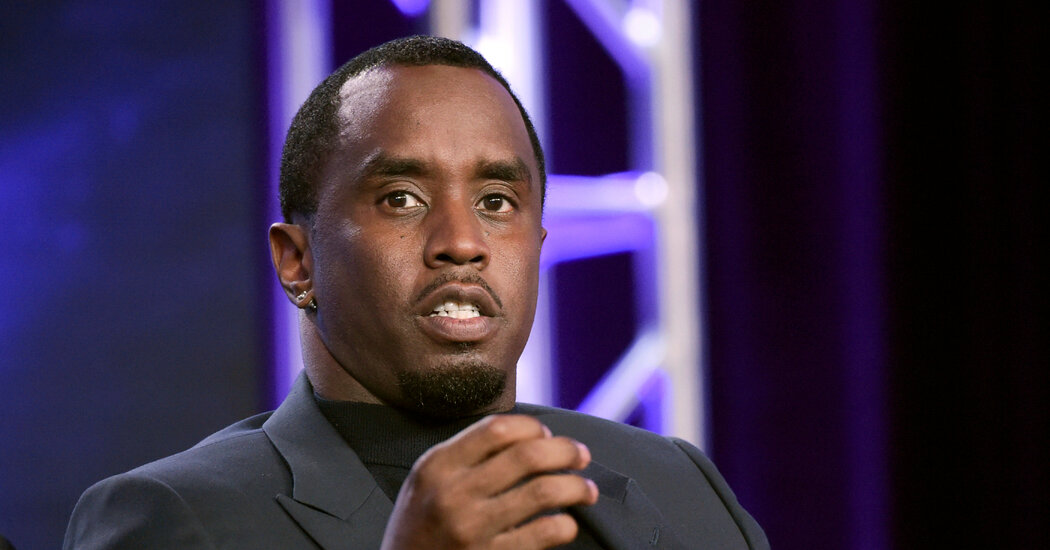A former employee of Sean Combs testified at his federal trial on Tuesday that while working for the music mogul, she was forced to take a series of lie-detector tests by a man who told her that if she failed, “they’re going to throw you in the East River.”
The woman, Capricorn Clark, who started working for Mr. Combs as a personal assistant in 2004, said that soon after her employment began, she was subjected to five days of testing to prove that she was not involved in the disappearance of three pieces of diamond jewelry that were on loan to Mr. Combs.
“I was petrified,” Ms. Clark said of the threat she received, which she said came from an unnamed man who carried out the testing on a “dilapidated” floor of a Manhattan office building that later became Mr. Combs’s corporate offices. She said one of Mr. Combs’s bodyguards took her there each day.
Prosecutors who have charged Mr. Combs with racketeering conspiracy and sex trafficking have said that he or his associates kidnapped Ms. Clark twice while she worked for him. The second time, they say, occurred after the much-discussed fallout over Mr. Combs’s discovery that Casandra Ventura, his longtime on-and-off girlfriend, and the rapper Scott Mescudi, known as Kid Cudi, were romantically involved.
The government contends that after Mr. Combs discovered evidence of the budding relationship in late 2011, he went — armed and with a bodyguard — to wake up Ms. Clark in the middle of the night and force her to take them to Mr. Mescudi’s home. On Thursday, Mr. Mescudi gave his account of Mr. Combs’s jealous meltdown, which he said escalated to his Porsche being set on fire with a Molotov cocktail in early 2012.
Lawyers for Mr. Combs, who has pleaded not guilty to all of the charges, have denied Mr. Combs’s involvement in any kidnapping or arson — and have said there was never any criminal conspiracy. They assert that Ms. Ventura and another woman that Mr. Combs is accused of sex trafficking are not victims, but rather former girlfriends who agreed to participate in sex that, while “kinky,” was entirely consensual and legal.
The kidnapping accusations are meant to buttress the racketeering conspiracy charge against Mr. Combs, which accuses him and members of his inner circle of a series of crimes dating back to 2004. The crimes cited in the indictment include sex trafficking, arson, drug violations, bribery, obstruction of justice and two acts of kidnapping — both of them involving Ms. Clark.
In the defense’s opening statement, Teny Geragos, one of Mr. Combs’s lawyers, began their effort to undercut the kidnapping accusations, saying that more than a decade after Ms. Clark says she was kidnapped, she asked to work for Mr. Combs again.
“As you listen to her testimony and evaluate: Was this person actually kidnapped?” Ms. Geragos told the jury at the start of the trial.
Previous witnesses in the case have described Ms. Clark as a former assistant of Mr. Combs who spent time working with his fashion label, Sean John, and also helped Ms. Ventura with her music career.
Two weeks into the trial, the witnesses have largely been aimed at corroborating Ms. Ventura’s account of rampant physical abuse and sexual encounters known as “freak-offs,” which she gave during four days of testimony at the start of the case.
The witnesses that followed have included people who say they witnessed Mr. Combs’s physical abuse of Ms. Ventura or its aftermath and two men who were paid to have sex with Ms. Ventura while Mr. Combs watched. Law enforcement officials have also described for the jury the searches they made of Mr. Combs’s property during the criminal investigation.
On Tuesday, more law enforcement officials are expected to take the stand, this time from the Los Angeles Police Department and the Los Angeles Fire Department.
Julia Jacobs is an arts and culture reporter who often covers legal issues for The Times.
Ben Sisario, a reporter covering music and the music industry, has been writing for The Times for more than 20 years.
The post At Combs Trial, Former Employee Says She Was Kidnapped and Threatened appeared first on New York Times.




